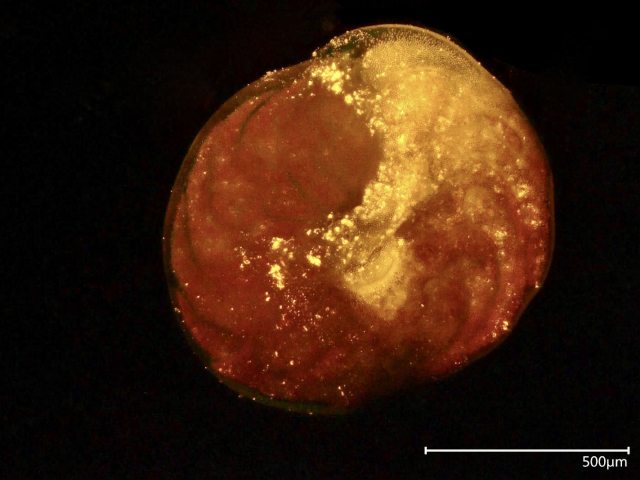22/11/2022 | Single-celled organisms with calcareous shells, called foraminifera, contribute significantly to the formation of sand deposited on beaches, islands and coastal areas. Researchers at the Leibniz Centre for Tropical Marine Research (ZMT) have now found for the first time that foraminifera can take up tiny plastic particles and incorporate them into their calcareous shells. The results were published in Scientific Reports and Limnology and Oceanography Letters.
Gleaming white tropical beaches are coveted destinations for many recreation-seekers. But how do we perceive such beaches if we have to fear that they consist to a not inconsiderable extent of micro- and nanoplastics - invisible to our eyes?
Tropical beaches are mainly formed by calcifying marine animals such as corals, mussels and snails. The fact that corals incorporate microplastics into their calcareous skeleton has already been proven in studies. In some regions of the world, however, such as Indonesia, the Philippines and Australia, many beaches consist largely of the calcareous shells of foraminifera. These are single-celled organisms, a few millimeters in size and with a protective calcareous shell, that can be found in warm, shallow coastal areas worldwide.
Are tiny plastic particles, as they are produced from our plastic waste by friction, salt, bacteria or UV light everywhere in the ocean, also found in foraminifera? This was the question of a team of marine researchers at the ZMT. Since foraminifera are found in oceans worldwide, their shells forming not only beach sand but also large parts of the sediment on the seafloor and solidifying the structure of coral reefs, it is important to understand how the single-celled organisms deal with small plastic particles.
"Foraminifera feed on, among other things, microalgae or organic material particles they find on the seafloor. Micro- and nanoplastic particles have similar sizes and could easily be mistaken for potential food," explains Marlena Joppien, first author of the studies.
In a series of experiments, the ZMT team exposed several hundred foraminifera to seawater tanks for several weeks. They fed them partly with tiny micro- or nanoplastic particles, partly with natural food particles or a mixture of both. They observed that while the foraminifera preferred the natural food, when both were available at the same time, they frequently ate plastic pieces.
Using a fluorescence microscope, the researchers were able to observe a large number of yellow glowing nanoplastic particles in the foraminifera. Although some of the unicellular organisms rejected the plastic after the feeding experiments, about half of the foraminifera retained the plastic load inside the cell.
Then, after eight weeks, a scanning electron microscope with 80,000x magnification revealed that many of the single-celled organisms had already encrusted the plastic particles with a layer of calcium carbonate and were apparently in the process of incorporating them into their shell.
"So if the plastic particles are small enough, the foraminifera will take them in as food," reports Marleen Stuhr, co-author of the studies. "For the environment, this could have advantages and disadvantages. For example, the trillions of foraminifera on the seafloor could be a sink for nanoplastics, a system that removes plastic from the ocean."
One problem the researcher sees, however, is potential impacts on the health of the foraminifera. On beaches and in shallow marine areas, the shells of foraminifera are often deposited at high densities of more than 1 kg per m2. However, if the protozoa interchange plastic particles with their natural food and incorporate them into their calcareous shells, their fitness, shell formation and stability could be disrupted - with consequences for their population as a whole. This, in turn, could have a long-term impact on coasts and islands, which are already suffering greatly under the weight of sea-level rise and erosion from increasingly frequent and powerful storm surges.
Publications
Joppien M, Westphal H, Chandra V, Stuhr M, Doo S (2022) Nanoplastic incorporation into an organismal skeleton. Scientific Reports 12, 14771. https://doi.org/10.1038/s41598-022-18547-4
Joppien M, Westphal H, Stuhr M, Doo S (2022) Microplastics alter feeding strategies of a coral reef organism; Limnology and Oceanography Letters, 7(2), 131-139. https://doi.org/10.1002/lol2.10237





